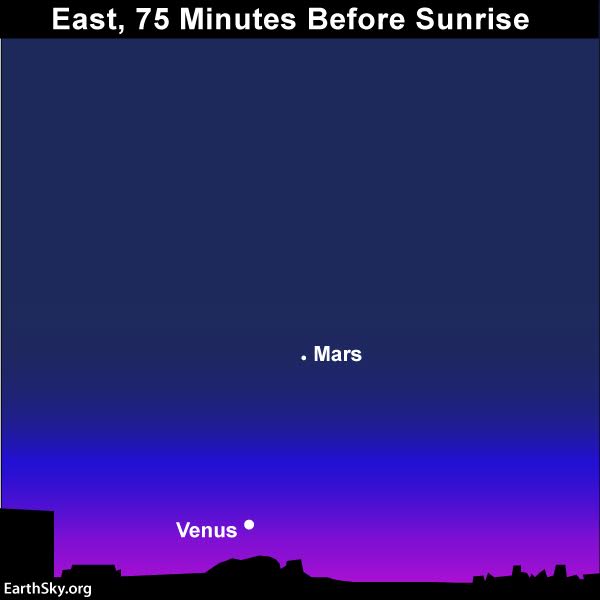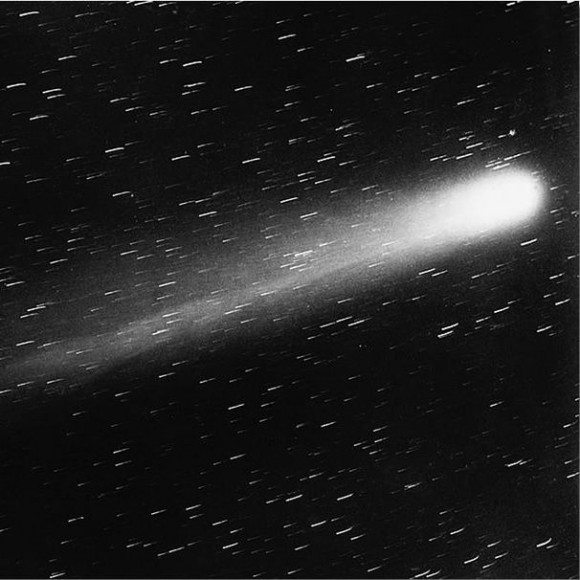
This weekend presents the Orionid meteor shower at its best, and tonight – the night of October 20-21, 2017 – may well be the shower’s peak night. Late Saturday night and Sunday morning may be good times to watch as well. On both of these nights, meteors should become visible starting at late evening. They’ll probably be most prolific in the few hours before dawn on October 21, but try watching before dawn on October 22, too.
From a dark site, you might see a maximum of about 10 to 15 meteors per hour.
Fortunately, today is only one day after new moon, so there’ll be no moonlight to ruin this year’s Orionid meteor shower. In fact, it will hard to catch the young waxing crescent moon low in the west after sunset. Click here to find out the moon’s setting time in your sky, remembering to check the moonrise and moonset box.
As is standard for most meteor showers, the best time to watch this shower will be between the hours of midnight and dawn – regardless of your time zone.
The meteors – vaporizing bits of comet ice and dust – will look like streaks of light in the night sky. They’re sometimes called shooting stars.
EarthSky’s 2018 lunar calendars are here! Get your calendars 25% OFF this week.

As the predawn darkness starts to give way to dawn, watch for the planets Mars and Venus to rise into your eastern sky. Click here for a recommended sky almanac; an almanac can help you determine rising times for Mars and Venus in your sky.
Or just watch for the very bright object that ascends in the east before the sun. That’ll be Venus.
The predawn and dawn sky also offers a great view of Sirius, the sky’s brightest star. Watch for it in the south (or overhead if you’re in the Southern Hemisphere) before dawn.

The Orionids stem from debris from the most famous of all comets, Comet Halley, pictured above. The picture shows Comet Halley itself at its 1910 visit. The comet last visited Earth in 1986 and will return next in 2061.
As Comet Halley moves through space, it leaves debris in its wake that strikes Earth’s atmosphere most fully around October 20-22, every year. The comet is nowhere near, but, around this time every year, Earth is intersecting the comet’s orbit.
If the meteors originate from Comet Halley, why are they called the Orionids? The answer is that meteors in annual showers are named for the point in our sky from which they appear to radiate. The radiant point for the Orionids is in the direction of the constellation Orion the Hunter. Hence the name.

Remember … even one meteor can be a thrill. Just be sure you have a dark sky.
Bring along a blanket or lawn chair – after midnight or before dawn – and lie back comfortably while gazing upward. Although a somewhat modest shower, these swift-moving meteors are sometimes bright, occasionally leaving a persistent train – a glowing streak that lingers momentarily after the meteor has gone!
Donate: Your support means the world to us

Bottom line: Best night for the Orionid meteor shower in 2017 is probably October 20-21, especially between midnight and dawn October 21. You might see as many as 10 to 15 meteors per hour from a dark site. Fortunately, no moon will ruin this year’s Orionid meteor shower.











